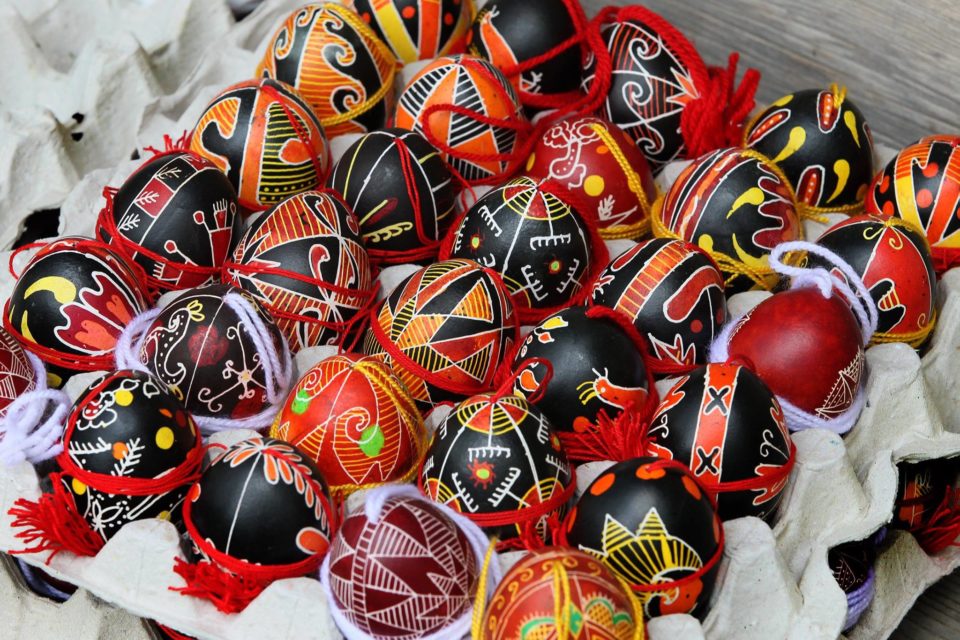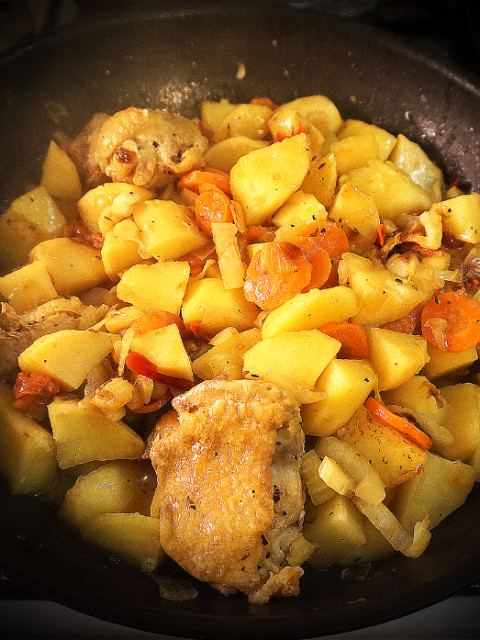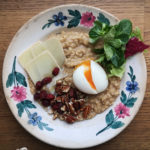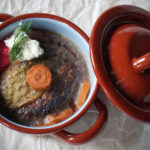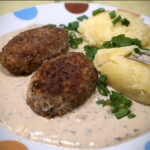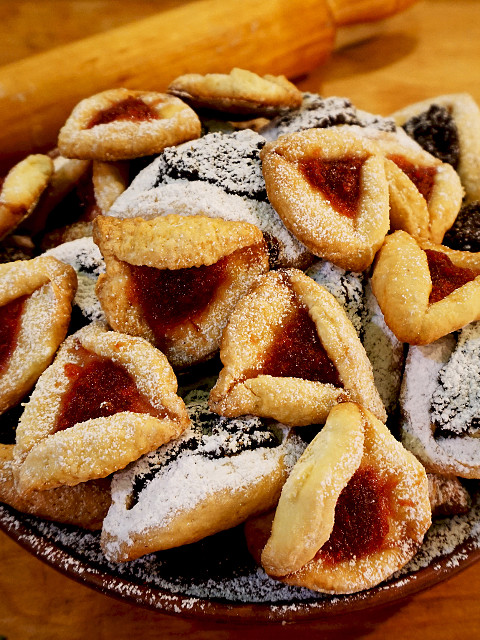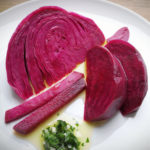At first this text should have had a title “Easter traditions in Galicia”. Then I realized that part of traditions is common and are spread on significantly broader territory. Later, in the process of writing, it became obvious that apart from clerical traditions there are plenty Easter-related superstitions and straight-out fiddlesticks. And finally, it became clear that if to write about all of it the text will not be enough, and few will read it till the end. So, this is going to be small review of everything, in the basis – what I know “from home”, and some things I picked up throughout my life. If you add your knowledge, I will be happy.
As it usually is, I by no means say that it is the absolute truth, just sometimes there is a wish to sort out what I know or remember from my childhood. Because older generation passes away, and now I’m really sorry that I used to be too small or too careless, and didn’t have time to ask about many things, to peek, to learn. But enough about sad things. It’s Easter!
After winter, strict Lent, it is only natural that on an Easter table there is just explosion of prohibited in Lent food. No least of all it is a physiological need of body – get fed after Lent and before the season of active work.
Easter bread is a foundation for celebration in all Christian countries. It is always yeasted dough, with plenty of eggs, butter, sugar, spices and seasonings. It is an embodiment of everything best, the most delicious and the most valued that one could afford – almonds, vanilla, cinnamon, saffron, and I don’t even mention dozens of eggs and the best flour and butter.
A form of Easter bread – mostly round, sometimes braided, decorated with symbolic ornaments. Actually, even baking of Easter bread (we call it paska) – symbol on symbol, spiced with household superstitious.
Paskas have to be baked in round forms, and, depending on the region, people value either its width or its height (*). But there is one common thing – paska shouldn’t crack or get out of shape. Successful paska – is a symbol of a successful year for the whole family.
Apart from big common paska, every member of a family had his/her own paska, and from the way it turned out “told fortunes” about the fate of that person for the nearest year.
In doctor Oleksandr Nadraga’s memories we read:
We eventually get to my mother; though her old wrinkled poor hands are exhausted, but she has to make paska as big, as she made 60 years ago in dear Fereskula, with a rose and a cross in the middle and birds on the sides. Before she used to make one or two more smaller paskas for us, her children, and now one paska like that is already ready for my Olenka.
In fact, it was not a custom in Ukraine to cover paskas with white sugar glazing, as a contrast to “kulich” (Russian Easter bread), which were usually covered with white glazing. Paskas in our tradition were decorated with crosses from dough (symbol of patience), cuckoo-birds with joined wings (longevity), braids and spikelet (harvest), symbols of eternity and other ornaments. There are many common thngs in decorating paskas and Easter eggs (pysanky).
But in ancient books (for example, Olha Franko, 1929) there are notes that
“You can cover paskas with any kind of glazing for cakes, and sprinkle them with cut almonds, sugar and cinnamon”
Now paskas are mainly glazed, in which I, on the one hand, see diffusion on times when it was difficult to have own traditions, and, on the other hand, influence of mass media and “wild Internet”, when everyone and their dog can write and share simply translated content. (**)
And now a bit of family reflections, to which I do not always adhere, though I try, but they live inside me, as a precious compass.
A week before Easter a house should have been clean as a new pin – washed windows and curtains, pillows and blankets aired on the sun and clothed in fresh bed linen. Thursday was the last day for cleaning, and after that, in the clean kitchen, paskas were baked.
Before baking paskas, my grandma wore clean clothes, washed her hands and face, showed everybody out from the kitchen and prayed. Flour for the dough heated next to the oven and several times filtered through a sieve.
After the first kneading with her palm made a sign of the cross on the dough and covered with napkin. And when dough raised for the first time – touched it and let it grow in peace.
It is not allowed to sit while paskas are being baked, because “paska will sit”. Strangers are not allowed to the house, especially women, because “evil spirits” could come with them, and it means that everything should be sprinkled with holy water.
In fact, there were three types of Ester bread in Galicia – paskas, kolaches and babs.
Paskas and kalaches were baked from almost the same dough, approximately with 10 eggs, but paskas were always round and sweeter, kolaches – less sweet, with braids. Whereas babs were baked with 30-40, even 60 eggs, and also, they could be from short pastry, or yeast, always sweet, with plenty of spices and smells. Pasky were baked in special dishes, as well as babs – in dishes made of clay with thick sides, sometimes with a fap in the middle, so baba had a form of a wreath.
Now paskas and babs for majority of people is almost the same, but I remember that grandma differentiated between them, and there was a difference. Though, I know for sure, that there are families in Lviv were both paskas and babas are baked.
It doesn’t matter how yellow and pastured are the eggs, but for good yellow dough is always added saffron, that always was kind of “showing off” before relatives and neighbors, because true saffron was always valuable.
One more traditional Easter bakery are lambs. In our family they were baked from regular dough for paskas and in heavy moulded forms. I don’t remember somebody eating those lambs, and one lamb was always put in the basket, and then it was standing in the cupboard for a very long time, with a tied ribbon around its neck.
In my childhood I had several “small Easter mercies” – cheese horses, new pysankas and creeping to the closet.
Cheese horses were brought from Kosiv market, I enjoyed sucking horse’s leg, suck salty whey from it, strip the horse into separate threads, wrap them around my finger, and, at last, eat.
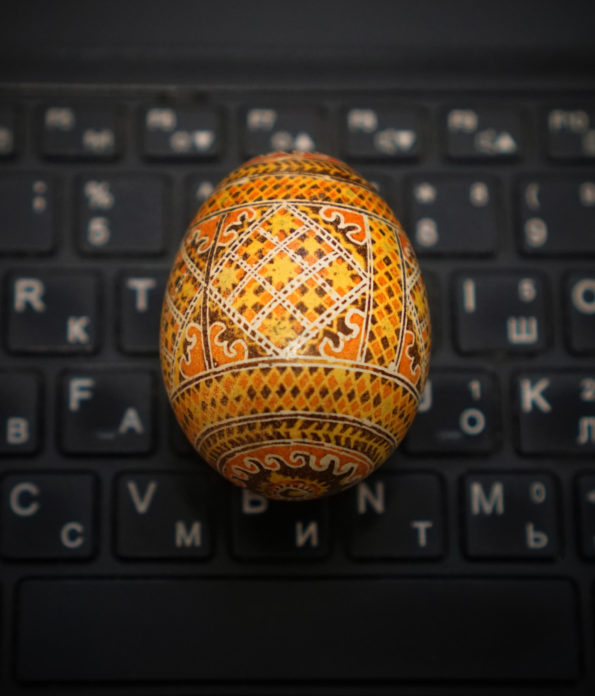
Pysanky in my childhood were from Kosmach, Pistyn and suburbs, and in one day, approximately one-two weeks before Easter, they just appeared. I never noticed who had brought them. Just in the basket were put several new, shiny, with delicate ornaments, eggs.
I don’t remember somebody making pysanky from blown out eggs or (God forbid!) on wooden forms. All eggs were whole, with yolk inside, you should have treated it extremely carefully, especially with the ones from the previous year. Because if you break such egg – it stank for all cupboard and suburbs.
In mid-Easter time pysanky lived in a small dish on the top shelf of the cupboard, as far as possible from our sticky fingers. This year I dusted old pysanky and all of them gently thunk inside with dries yolk.
While the closet is a “mystery of mysteries”. Sweets lived there. And if paskas and kalaches lay under napkins on the table in granddad’s room, in the closet was something much more interesting. Rolls, stuffed with jam from green tomatoes, waffles, poppy-seed cake with honey cake, and my favorite “wells” – choux pastry, in which you could stick a finger and get vanilla custard.
Of course, it was prohibited to go to the closet, but who would listen?
Well, let’s have a look at other interesting things (together with their symbolic meanings and superstitions) we will put in our Easter basket.
If you even just glimpse at household Easter rituals, you can see how closely interlaced are pre-Christian and Christian traditions, and over them there are some kinds of kitchen-magic rituals.
Let’s take, for example, blessing of the knife to cut paska ( I don’t remember this in our family, but I read it some sources); for girls – washing with water, where pysanky lie –“for beauty”; even content of the Easter basket – it’s not just paska and sausages – it is just full with household symbolism!
I will never forget how an old nice woman on the market explained to me why women should put in their basket whole, young, green, big horse radish, and by no means grated! I’m not going to retell it, guess yourselves.
Basket made of vine for blessing appeared in the tradition not so long time ago, sometime around the 20th century. Paska and eggs were brought to a church in tablecloths, or in bags, Hutsuls did it with their own bags – besagy, even put in carts.
My mom told me that when grandad went to bless paska during the Soviet times, he put it in his brief case, and in the pocket – several boiled eggs, so “if something happened” he could quickly hide it all. Such were the times, good that they passed.
Trip to the church on Easter was always not only a religious, but also secular ritual. Because the wife has to show her skills, while the husband – wealth. So well-baked, big, beautiful paska, beautifully decorated basket, clean children – that’s all trophies.
Basket for Easter should be a special one, you cannot put anything else in it throughout the rest of the year. As well as special, usually embroidered, napkin to put in the bottom of the basket and a towel or a long napkin, which we put on the basket. I, to tell you the truth, don’t really like napkins embroidered with willow branches and words “Christ has risen”, I like simple ones, embroidered with geometric ornaments. But each to their own.
At our house we decorate the basket with myrtle, but there are traditions to decorate with branches of periwinkle, willow, ribbons.
We out in the basket one paska, several boiled, necessarily peeled eggs, pysanky, salt in open caster, root of horse radish, cheese babka (baked cottage cheese with caraway seeds and eggs), butter in bowl, decorated with the cross, made of cloves, and something meat – usually a ring of sausage. And, for sure, a candle. And that’s, probably, all. We do not put a lot in the basket.
We never ever put alcohol in the basket. Frankly speaking, it looks like some kind of blasphemy for me, or what…what do they think? “I will bless this bottle and it will become holy water” – uck.
The table for the Easter breakfast is covered with special table cloth, white with embroidery. If I don’t forget, then several weeks before holidays I cut and put into water several branches of cherry or black currant – they start having leaves, and sometimes even blossom, and very nicely decorate table, if till Easter nature doesn’t turn all green (as it was this year). And also, we put the best plates and dishes, and in the corner of the table – blessed paska, pysanky, and, of course, that candle that was in the basket.
Those eggs that were blessed in the basket are divided into as many parts, as many people are at the table (+1 for the dog). We salt eggs, pepper them and add several pieces of fresh horse radish. Here is also an understandable symbolism, both ancient and Christian.
The oldest member of the family – now it is my father – share an egg among everybody, saying “Christ has risen!” and kissing everybody. Then – communal prayer and Easter breakfast.
Well, seems like I remembered everything. If not everything, then I will add it later. And to all of us happy holidays, sweet paska, and be healthy at the same time in a year!
(*) For example, gypsies from Zboishcha say that the higher paska is, the more respected a family is. Even several years ago there was an old, specifically made oven, which allows to bake almost 1meter tall paska! This is a real fundamental approach!
(**) In fact, the Internet is also full of deciphering of symbolism of white glazing on paskas. But I will not comment on this, decide for yourself.
Here I stole the picture, it is by Yevhen Kravs.

